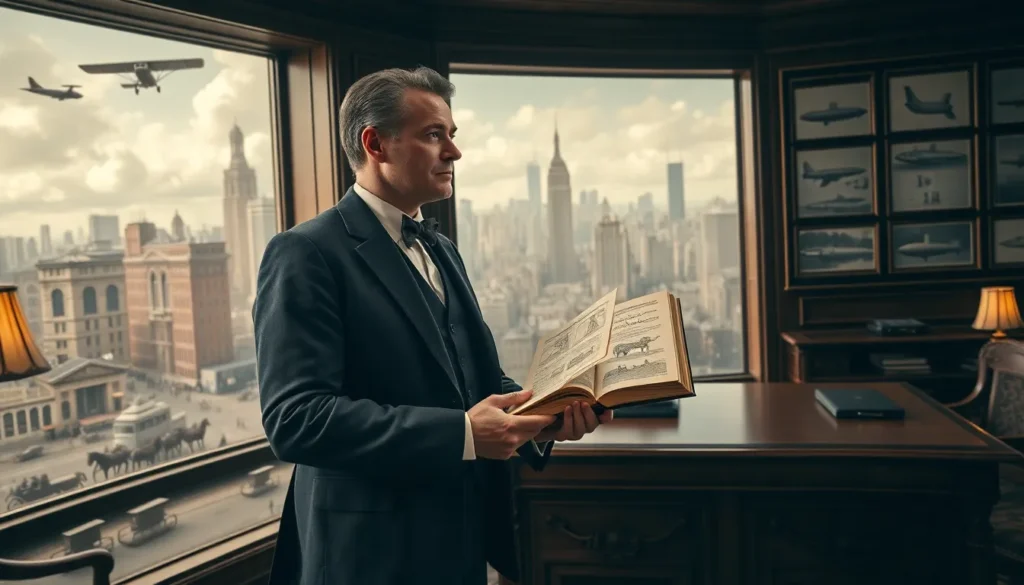Table of Contents
ToggleImagine stepping into a time machine and landing in the 1800s. Instead of the gas-guzzling vehicles and smart gadgets of today, people were riding horses and reading by candlelight. Yet, during their oil lamps and horse-drawn carriages, visionaries were peering into the future. They made predictions about technological marvels, societal shifts, and political upheavals. Some of these forecasts were wildly optimistic, others astonishingly accurate, and a few simply outlandish. Prepare for a journey through time as we explore 1800s future predictions and see how credible these clairvoyants turned out to be.
The Context of 19th Century Predictions

The 1800s were a period of immense change and innovation. The Industrial Revolution transformed societies, creating new technologies and altering the landscape of everyday life. With steam engines powering machinery and railroads crisscrossing nations, people were filled with hope and curiosity about the future. Writers and scientists began speculating not just about what machines might one day achieve, but also how these developments could shape the human experience.
Amidst this whirlwind of progress, thinkers like Jules Verne and Mary Shelley began crafting narratives that pushed the boundaries of imagination. They paved the way for serious predictions about humanity’s trajectory. The atmosphere was ripe for speculation, blending excitement with the unknown. The age was marked by a unique interplay between optimism surrounding innovation and trepidation about its impacts, setting the stage for predictions that would echo through time.
Technological Advancements Foreseen
One of the most thrilling aspects of 1800s predictions was about technology. Thinkers of the time boldly speculated about inventions we now take for granted. Imagine someone asserting in 1865 that man would travel beyond the stars or that we’d communicate instantly across vast distances, fairy tales? Not for visionary minds like Nikola Tesla. He envisioned wireless technology’s potential, setting the groundwork for our modern telecommunications.
Another notable figure, Jules Verne, captivated audiences with novels that explored innovations like submarines and flying machines, long before they hit the drawing boards. His predictions ignited imaginations and inspired real-life inventors. While some visions fell flat, others had profound groundwork in reality. The prediction of a “The Eighth Wonder of the World,” a network of railroads connecting continents, hinted at our now globalized society, something eventually realized through technological advancement.
Social Changes Anticipated
The 19th century was not just about steam and steel: it was also a time when many began to envision profound social transformations. Figures like Harriet Tubman and Susan B. Anthony were already fighting for social justice and equality, daring to predict a future where freedom and civil rights reigned.
The idea of women gaining rights and education was revolutionary for the time. Many predictors believed in a world where gender equality thrived. In fact, the suffrage movement gained momentum, illustrating that dreams of equality were not merely fanciful. They were rooted in grassroots activism that would eventually lead to significant changes.
Also, the concept of a global community began surfacing. Intellectuals foresaw a future where communication and connectivity would transcend borders. This notion seems prophetic in our age of the Internet, proving that social predictions often hinge on human ambition more than mere technology.
Political Forecasts and Global Relations
Political analysts of the 1800s were not shy about forecasting drastic changes in governance and diplomacy. They speculated on rising powers, colonialism, and even the idea of democratic expansion. The world was shifting from monarchies to republics, and thinkers like Alexis de Tocqueville predicted sweeping reforms in governance.
Also, the predictions of conflict were also pervasive. Many anticipated struggles over imperial ambitions as nations jostled for territory and influence. The rising nationalism in several parts of Europe hinted at persistent tensions that would eventually escalate into the world wars of the 20th century. In retrospect, examining predictions of global relations helps us understand how deeply entrenched certain ideologies can be, often leading to unforeseen consequences.
Cultural Predictions and the Arts
Cultural foresight was also a hallmark of the 1800s. As art and literature evolved, so did the predictions surrounding them. The Romantic movement celebrated emotion and individualism, hinting at future artistic expressions focusing on self, identity, and social consciousness.
Besides, authors like Edgar Allan Poe envisioned haunting narratives filled with psychological depth, anticipating a shift towards the psychological realism that characterized 20th-century literature. They seemed to anticipate the era when art would not only reflect life but also capture its more complex nuances, allowing audiences to investigate into the darker aspects of human nature.
The Accuracy of 1800s Predictions
So, how accurate were these 1800s predictions? While some ideas appeared fanciful at the time, like interplanetary travel, other notions about technology, social stratification, and political dynamics have proven surprisingly prescient. The successes and failures of these predictions stem from a mix of societal values and scientific advancements.
For instance, predictions about women’s rights and international collaboration have become central themes in today’s dialogue. Many 19th-century visionaries may not have fully realized the depth of their foresight, but their ideas laid the groundwork for ongoing discussions. On the flip side, some technological forecasts like predictions of flying cars or moon bases are still in the realms of science fiction. Overall, while some visions are yet to be realized, the blend of prediction and reality showcases how the spirit of anticipation has persisted.




